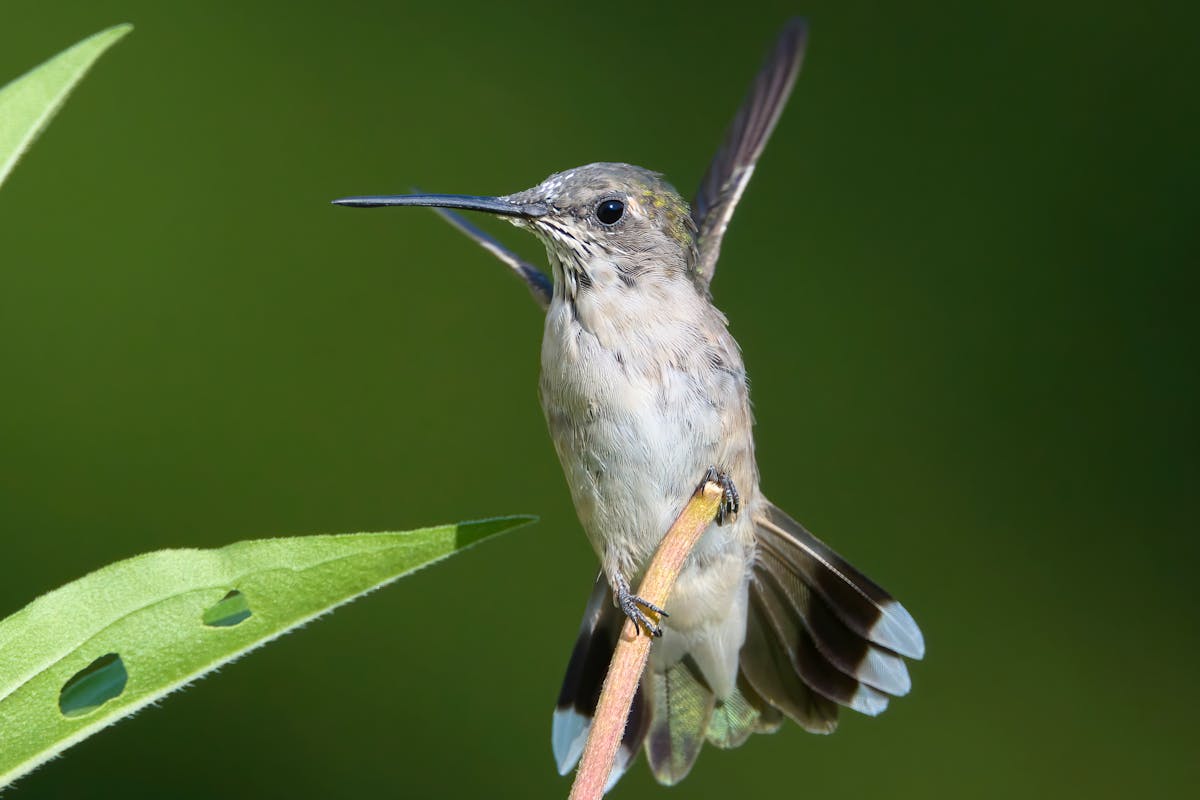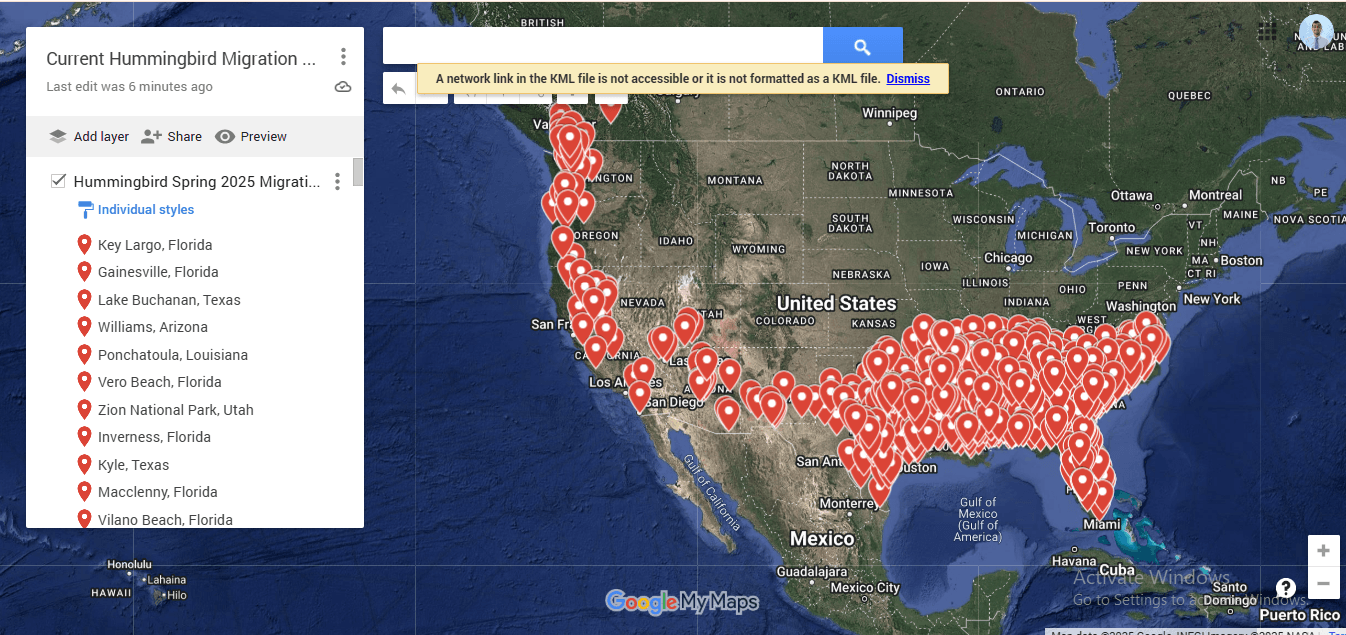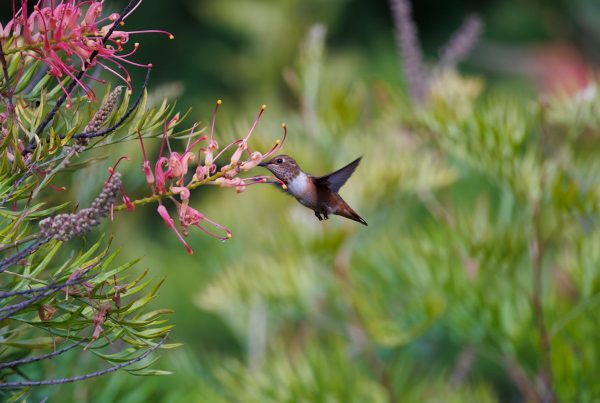Migration of Hummingbirds

Hummingbird Migration Map
Hummingbird Migration Map? Many hummingbirds spend the winter in Central America or Mexico and migrate north to their breeding grounds in the southern United States as early as February, reaching farther north later in the spring.
Hummingbirds fly during the day when nectar sources are more abundant. Flying low allows them to spot and stop at food sources along the way. They also take advantage of tailwinds to conserve energy and body fat.
Research shows that a hummingbird can travel up to 23 miles in a day. However, during migration across the Gulf of Mexico, they may cover up to 500 miles in a single flight. Their average speed in direct flight ranges from 20 to 30 mph and can triple during courtship dives.
During migration, a hummingbird’s heart can beat up to 1,260 times per minute, and its wings flap 15 to 80 times per second. To sustain this high energy level, they typically gain 25-40% of their body weight before migration to endure the long journey over land and water.
The first arrivals in spring are usually males. However, some hummingbirds do not migrate, particularly those in areas like the Pacific coast, southern Gulf states, and certain parts of the southeastern U.S.
Policies for Reporting Sightings:
-
- We do not publish names, email addresses, or exact physical addresses—only city, state, and sighting details.
- Sightings are placed near the center of a city rather than exact locations.
- If multiple reports are received for a single location, only one sighting is displayed.
- Sightings are posted within several days, not immediately.
- Due to high volume, not all sightings can be posted.
- Priority is given to sightings along the leading edge of migration.
2025 Spring Migration Activity: We track hummingbird migration from late January to May with reports submitted by viewers.
Species tracked:
-
- Ruby-throated
- Rufous
- Black-chinned
- Anna’s
- Allen’s
- Costa’s
- Calliope
- Blue-throated
- Broad-billed
- Broad-tailed
- Buff-bellied
- Rivoli’s
- Other/Unknown
Additional Information on Spring Migration: Hummingbirds fly alone, often following the same routes used in previous years. Young hummingbirds must navigate without parental guidance.
Strong cold fronts over the Gulf of Mexico create migration challenges, with headwinds, rain, and lack of food over open water.
Fall Migration: By August and September, hummingbirds begin migrating south. They feed in the morning, travel midday, and forage again in the afternoon to maintain body weight.
Ruby-throated hummingbirds gather in Florida, Louisiana, and the South Texas coast in September before migrating south over the Gulf of Mexico or through Mexico. Rufous hummingbirds migrate south along the eastern Rocky Mountains.
Hummingbird Central: We love hummingbirds and look forward to another exciting migration season in 2025! Our website provides information about hummingbirds in North, Central, and South America.
Hummingbird Migration Tracking Maps: Spring Hummingbird Migration maps are updated yearly based on viewer sightings. The 2024 map concluded on May 31, 2024. Tracking for the 2025 migration began in late January.
Identification of Hummingbirds: Hummingbirds are among the smallest birds, typically measuring 3 to 5 inches. Their needle-like bills are adapted for reaching deep into tubular flowers. Since many species look alike, our website includes side-by-side comparison charts to help distinguish them.
White and Albino Hummingbirds: Reports of albino and leucistic hummingbirds increased in 2023 and 2024.
Hummingbirds of the World: Hummingbirds are found only in the Western Hemisphere, with nearly half of the 366 species living in equatorial regions. Few species migrate to the U.S. and Canada, and only a handful remain year-round.
Attracting Hummingbirds: Creating a hummingbird-friendly garden includes planting flowers like lantana, pentas, salvia, and batface cuphea to provide food and shelter.
Birdwatching: While our primary focus is hummingbirds, we also provide information on other backyard birds and birdwatching experiences, including visits to locations like Colombia’s National Aviary.
Thank you for visiting! We look forward to another exciting hummingbird season in 2025!
Trending Topics at Hummingbird Central:
Species: Hummingbirds are found in the Western Hemisphere, with half living in equatorial regions. There are 366 species, mostly in the southern U.S., with fewer than two dozen in North America.
Migration: Hummingbirds migrate north in spring and south in fall. Some remain in California and along the Pacific coast year-round.
Feeders: Providing food sources, including nectar-rich flowers and feeders, is essential for attracting hummingbirds.
Facts: Hummingbirds weigh only a few grams, can hover, and even fly backward. Their wings beat up to 55 times per second, creating a humming sound.
Attracting Hummingbirds: Hummingbirds prefer red, tubular flowers. Our website offers tips for creating a hummingbird-friendly garden.
Identification: Since many species look alike, our website includes comparison charts to help identify them.
Frequently asked questions
Where is the hummingbird migration right now?
-
Keep up with the latest sightings. Find out which states hummingbirds are visiting during their 2025 migration.
When does hummingbird migration start in spring 2025?
Find out when the first hummingbirds head north. Look for signs in your area.
What is the typical hummingbird migration route?
- Hummingbirds can fly impressive distances. They often travel hundreds of miles during migration. To cover long distances, they use smart strategies.
- When flying over water, they glide to save energy. On land, they take short breaks to rest. This helps them maintain their stamina. Overall, these birds travel with great skill.
- Discover how far and fast these small birds travel each day on their trip from Central America to the U.S. and Canada.
What triggers hummingbird migration each year?
-
Learn about the natural cues that guide hummingbirds to migrate. These include daylight length and temperature.
How high do hummingbirds fly during migration?
-
Check their flight altitude, especially when they migrate over the Gulf of Mexico.
How can I track hummingbird migration in real time?
-
Find the top tools, apps, and websites to track hummingbird sightings and migrations in real-time.
What can I do to help migrate hummingbirds?
-
Set up feeders in a shady spot to keep the nectar fresh.
-
Use red, orange, or pink flowers to attract hummingbirds.
-
Choose native plants that provide natural food sources.
-
Avoid pesticides, as they can harm hummingbirds and their food.
-
Clean feeders on a regular schedule to prevent mold and bacteria.
When is the peak time to see hummingbirds in Your State?
- In your area, hummingbird sightings peak in spring and fall. They are most common during these seasons.










